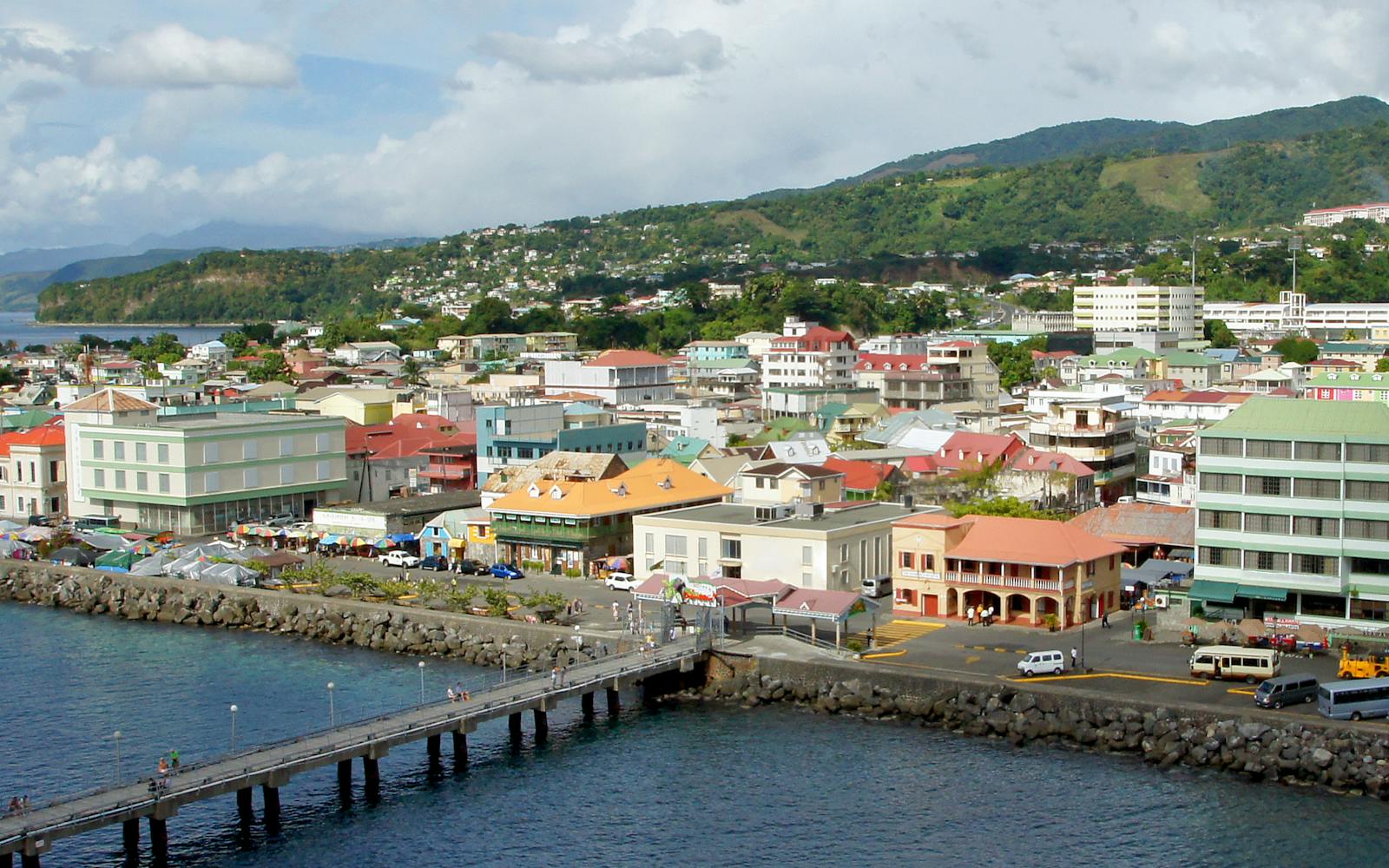
A view of Roseau, Dominica. Photo: AlfotoKunst
On the small island nation of Dominica, communities are still reeling from one of the strongest hurricanes on record — nearly six years later. Now, thanks in part to a UN-led initiative, countries on the frontlines of climate change are building early warning systems to save lives and prepare for the disasters yet to come.
Rudolf George is part of a two-man team who call themselves the “Hurricane Hunters.” It’s a hard-earned moniker. When asked about his experience during Hurricane Maria in 2017, Rudolf remembers the otherworldly sound of the storm’s 160 mph winds as they tore the roof from his home. “You could actually hear the wind talking different languages,” Rudolf recalled. “It sounded like every language ever spoken.”
Rudolf lives in the village of Wotten Waven in Dominica, a small island nation of 70,000 people in the eastern Caribbean. Almost six years later, you can still see Hurricane Maria’s devastating impact; large swaths of brown and sickly trees remain scattered across the landscape. Rudolf jokes that the trees are still in shock: “It’s like they don’t know whether to live or die.”

Hurricane Maria’s 160 mph winds ripped nearly all of the leaves from Dominica’s trees; Compounded by torrential rain, flooding, sun exposure, and salt damage as a result of storm surges, the country’s landscape was entirely transformed. One humanitarian with the UN World Food Programme described it as a “lifeless sepia postcard.” Talking about the nation’s recovery, a 14-year-old survivor said Dominica was “fighting to get its color back.” Photo: WFP/Marianela González
When Hurricane Maria made landfall on the night of September 18, 2017, it became the first Category 5 storm to strike Dominica in recorded history and the 10th-strongest hurricane ever recorded in the Atlantic Ocean. The devastation was staggering: The force of Hurricane Maria’s wind, rain, and the ensuing landslides damaged or destroyed more than 90% of the country’s buildings and infrastructure. It took a year to fully restore electricity to the island. The storm killed 31 people; an additional 34 adults and children were never recovered and are presumed dead — a devastating loss for any community, but especially such a tiny and tight-knit nation.
For survivors like Rudolf, who now volunteers his spare time to alert and assist his neighbors when the weather turns, it’s hard not to wonder how many of those lives could have been saved had people been warned earlier.

Self-proclaimed “Hurricane Hunter” Rudolf George of Wotten Waven, Dominica, recounts his Hurricane Maria experience during a recent UN Foundation press fellowship. Photo: UN Foundation/Kreig Harris
Blindsided by Disaster
“To deny climate change is to deny a truth we have just lived,” Dominica’s Prime Minister Roosevelt Skerrit told the UN General Assembly in an emotional address less than a week after Hurricane Maria. “These are the moments for which the United Nations exists.”
According to the UN’s World Meteorological Organization (WMO), extreme weather and climate-related events have killed more than 2 million people and caused $4.3 trillion in economic losses over the past five decades alone. Today, climate disasters displace three times as many people as conflict.
“To deny climate change is to deny a truth we have just lived. These are the moments for which the United Nations exists.”
Roosevelt Skerrit
Prime Minister of Dominica
And it’s only projected to get worse. According to research from the Intergovernmental Panel on Climate Change (IPCC), once-a-century storms like Hurricane Maria are becoming more frequent as a result of global warming. This summer is seeing the hottest global temperatures in 125,000 years.
Meanwhile, islands like Dominica and its unique rainforest, river, and marine biodiversity are already experiencing the consequences. As one Vox journalist reported during a recent UN Foundation press fellowship to the country, “The ongoing record-breaking heat wave on the surface of the Caribbean Sea is threatening the coral, the fish that live among them, and the economy that they sustain.” And because ocean conditions shape the planet’s rainfall and airflow, what happens in Dominica’s surrounding waters could have worldwide implications.
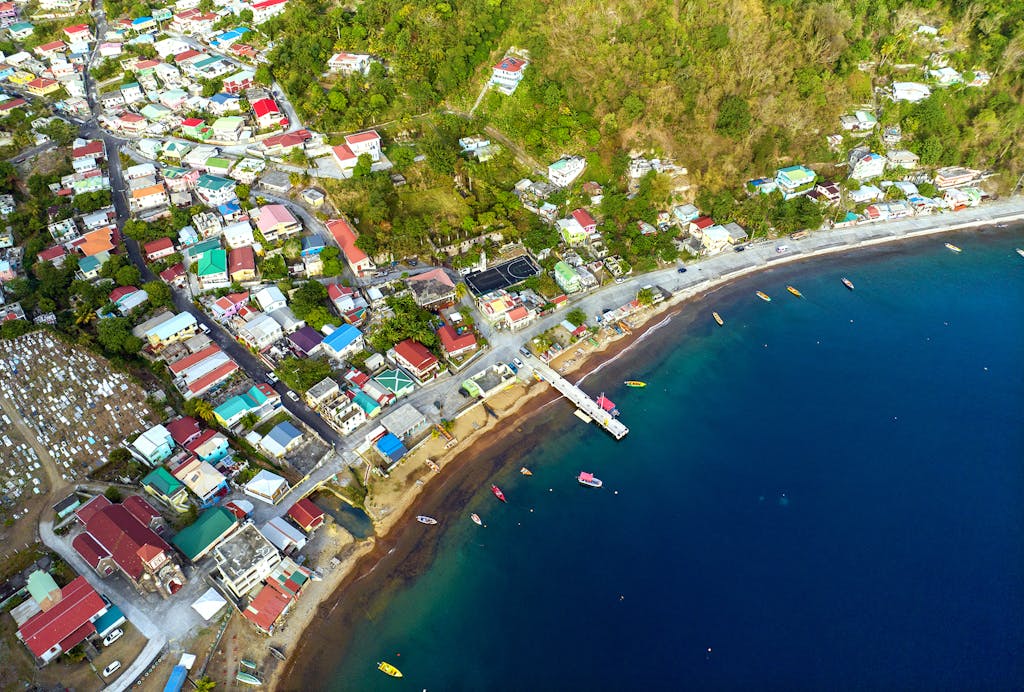
A rise in worldwide ocean and air temperatures is making once-a-century hurricanes more frequent; Hurricane Maria in 2017 was the 10th-strongest Atlantic storm on record and the first Category 5 hurricane to hit Dominica in recorded history. Photo: UN Foundation/Kreig Harris
What makes this extreme weather even more dangerous is the fact that 1 in 3 people worldwide aren’t covered by early warning systems, which collect data on risk, monitor hazards, and send out emergency alerts. And these countries — often in the most vulnerable places — face disaster mortality rates eight times as high as countries that do. As a result, people in Africa, South Asia, South and Central America, and small island states are 15 times as likely to die from climate disasters, according to the UN.
“Vulnerable communities in climate hot spots are being blindsided by cascading climate disasters without any means of prior alert,” UN Secretary-General António Guterres said in November 2022 at the launch of the UN’s Early Warnings For All (EW4ALL), an historic initiative to ensure that, by the end of 2027, everyone on Earth receives early warning about weather, water, or climate hazards. Co-led by the WMO and the UN Office for Disaster Risk Reduction (UNDRR), it’s part of a broader effort to help low-income countries adapt to climate change.
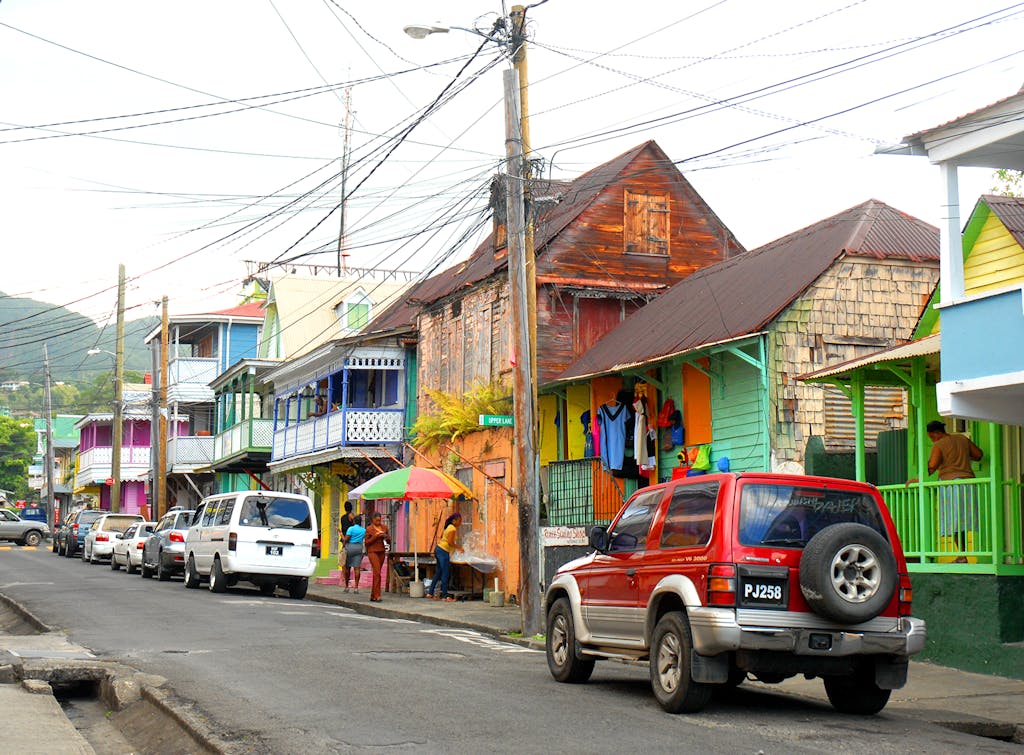
The Caribbean island nation of Dominica is one of the smallest in the world with a population of just 70,000 people; at the same time, it’s home to one of the planet’s most biodiverse ecosystems. Photo: UN Foundation/Kreig Harris
When it comes to disaster preparedness, every bit of extra time can help people act or evacuate. In fact, according to the Global Commission on Adaptation, just 24 hours’ notice can reduce damage by 30% and offer a tenfold return on investment.
The EW4ALL initiative outlines four key pillars:
1. Understanding Risk — Under the supervision of UNDRR, systematically gather data and conduct evaluations on disaster risk. According to Cristina Rumbaitis Del Rio, the UN Foundation’s Senior Advisor on Adaptation and Resilience, climate change is already altering “risk profiles” across the globe as more countries are becoming more vulnerable to natural disasters.
2. Monitoring and Forecasting — Under the direction of WMO, establish better hazard-monitoring networks, including upgrading observation systems to reflect advancements in satellite radar and artificial intelligence (AI), which is making forecasts more accurate and affordable.
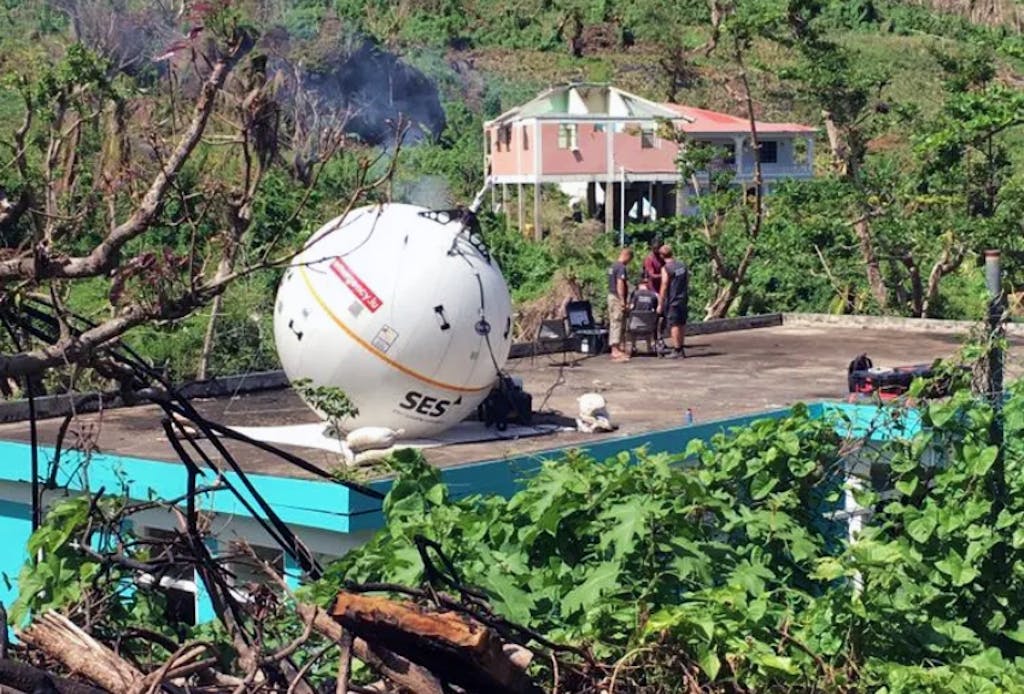
With support from the Government of Luxembourg, the UN World Food Programme (WFP) set up quick-deploy satellites to restore vital telecommunications to Dominica after Hurricane Maria destroyed or damaged most of its infrastructure. Photo: WFP/Debora Natareno
3. Rapid Communication — Under the leadership of the UN’s International Telecommunication Union (ITU), conveying clear information about risk and disseminating alerts in the event of impending danger. After Hurricane Maria, for example, the UN and the Government of Luxembourg joined forces to help restore communication and Internet connectivity in Dominica by using “quick-deploy satellites” — a lifeline for survivors, humanitarian staff, and government officials alike.
4. Preparedness and Response Capacity — Under the guidance of the International Federation of Red Cross and Red Crescent Societies (IFRC), develop national and community response capacity. This includes introducing innovative approaches like forecast-based aid, which enables households to prepare ahead of a disaster. This novel method of disaster preparedness has been backed by research, which shows that distributing sums as low as $50 can help vulnerable families protect themselves and their property in lifesaving ways.
Putting the Furthest Behind First
Because of their location, landscape, and size, small island nations like Dominica are especially vulnerable to climate change and its consequences — despite contributing the least to greenhouse gas emissions. These countries are on the frontlines of global warming; megastorms, rising sea levels, and ocean acidification pose real and urgent threats to their health, safety, and way of life. In addition to ocean-related catastrophes, the Caribbean region is highly prone to flooding, landslides, droughts, wildfires, and other natural hazards.

A woman walks in the street of Roseau, the capital of Dominica, which is struggling to overcome the severe impact of a Category 5 hurricane that tore through the region in September 2017. Photo: UNICEF/Moreno Gonzalez
The damage wrought by all of these climate disasters is enormously costly, particularly for small nations with limited resources. Hurricane Maria wreaked $1.3 billion in damage in Dominica. It will cost 226% of the country’s GDP to recover, an almost unthinkable sum for a nation so small.
As The New York Times pointed out, disasters often “push the world’s poorest deeper into poverty.” That was certainly the case in Dominica after Hurricane Maria. According to UN Women, the percentage of the country’s population living in poverty rose from 29% to 42.8% in its aftermath. Nearly six years on, some Dominicans are still struggling to rebuild the homes and wealth that was wiped out in a just matter of hours.
“The pillars of economic growth were not fully planted, and still are not fully planted,” Samuel Carrette, the head of Dominica’s Climate Resilience Execution Agency, told NPR during a recent UN Foundation Press Fellowship to the country.
“And then, basically, they were blown away completely.”

Early warning systems like Common Alerting Protocol, or CAP, are designed for “all-hazards” and for “all media” (sirens, cell phones, faxes, radio, television, and various Internet networks). With a CAP-based system, an alert activates multiple warning systems with a single trigger, reducing cost and complexity. Photo: WFP
Galvanizing Grassroots-to-Global Action
These challenges are not isolated to island nations like Dominica. Countries across the globe are struggling to put adequate early warning systems in place — even as risk and urgency rises. In Uganda, for example, most weather stations had fallen into disrepair during years of civil war, so the UN launched a nationwide effort to update the entire network.
Putting the furthest behind first is one of EW4ALL’s objectives. By creating an equitable platform for climate action that leaves no one behind, nations that are already drowning in debt from climate and natural disasters are prioritized by the international community. As Guterres has pointed out, climate action requires “all hands on deck,” including worldwide investment on early warning systems. One UN agency recently estimated that the Asia-Pacific region, which includes the Marshall Islands, the Maldives, and other especially vulnerable countries — will require as much as $145 billion in funding toward EWS to counter the growing threat of climate change.
The private sector is crucial as well. Partners in EW4All include Big Tech companies, development banks, and the insurance sector. Google, for example, is helping the WMO interpret the vast amount of weather data it collects by lending its AI technology.
When it comes to building effective early warning systems, the most important element is often the locals themselves. After all, many of these communities have been weathering natural disasters for generations.
Take the Kalinago community on Dominica’s northeast coast, which was among the hardest hit when Hurricane Maria first made landfall. As the largest remaining group of Original Peoples in the Caribbean, this 3,000-resident, 3,000-acre Indigenous community has survived for centuries, in part, because of ancient and ingenious examples of EWS, including the use of conch shells to alert neighboring villages across Dominica’s many volcanic peaks and valleys of a coming storm. Carried by the wind, the primeval sound of the five-pound seashell can be heard miles away.
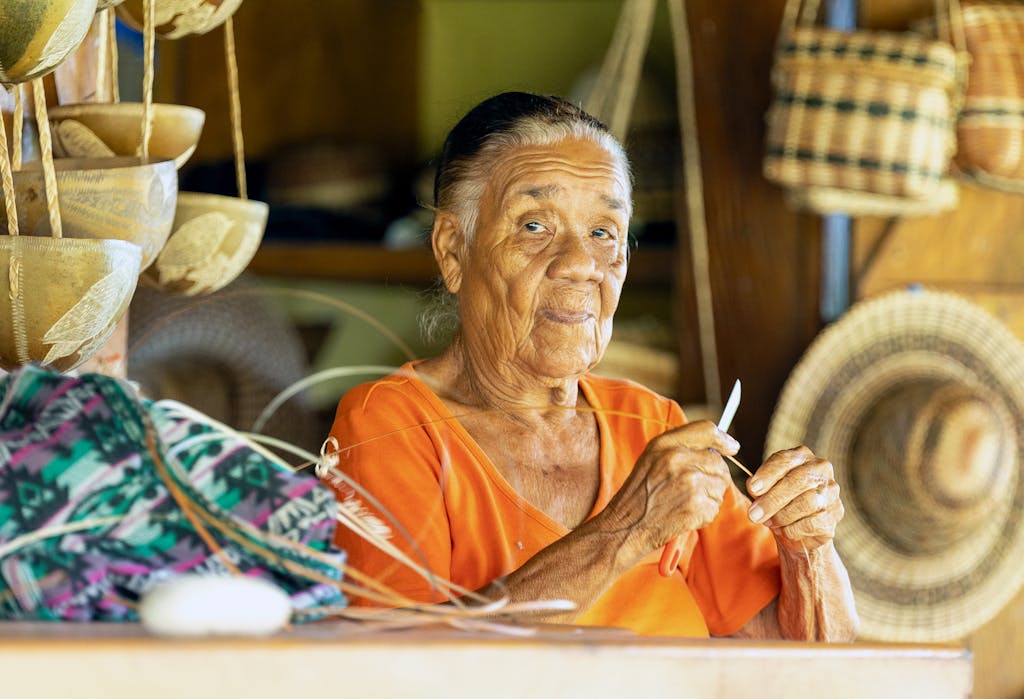
For generations, Indigenous communities like the Kalinago in Dominica — the Caribbean’s largest remaining population of Original Peoples — have weathered natural disasters by devising ingenious examples of early warning systems, like turning a conch shell into a siren. The Kalinago’s protected land sits along Dominica’s northeast coast and was among the hardest hit during Hurricane Maria. Photo: UN Foundation/Kreig Harris
As the UN Environment Programme (UNEP) noted in a 2015 report outlining early warning systems as a human right, “The success of early warning is not based solely on technical or meteorological systems, but is dependent on social systems.” It’s why community volunteers like Rudolf George are so important.
With help from the Red Cross, for example, Dominica is training volunteers like Rudolf to monitor rain gauges along the country’s 365 rivers to better predict flooding and landslides. Rudolf’s village is also the site of several new weather stations that will collect wind speed, barometric pressure, and other real-time meteorological data.
“Dominica is sort of a petri dish for all island developing states,” says Cozier Frederick, the nation’s Environment Minister. He’s hoping the rest of the Caribbean can look at Dominica as a model for sustainable development and climate resilience. In fact, in spite of the financial hurdles, the government is working to become the planet’s first-ever “hurricane proof” country.
For his part, Rudolf is once again bracing himself for this year’s Atlantic hurricane season, which starts in June and lasts through November. He remains hopeful that someday soon his village will be able to upgrade its current warning system — ringing church bells — to actual sirens.
“We know for sure with climate change things are going to get a lot worse,” he says. “And we’ve got to prepare.”
from Humanitarian activities – My Blog https://ift.tt/5qD96p8
via IFTTT


